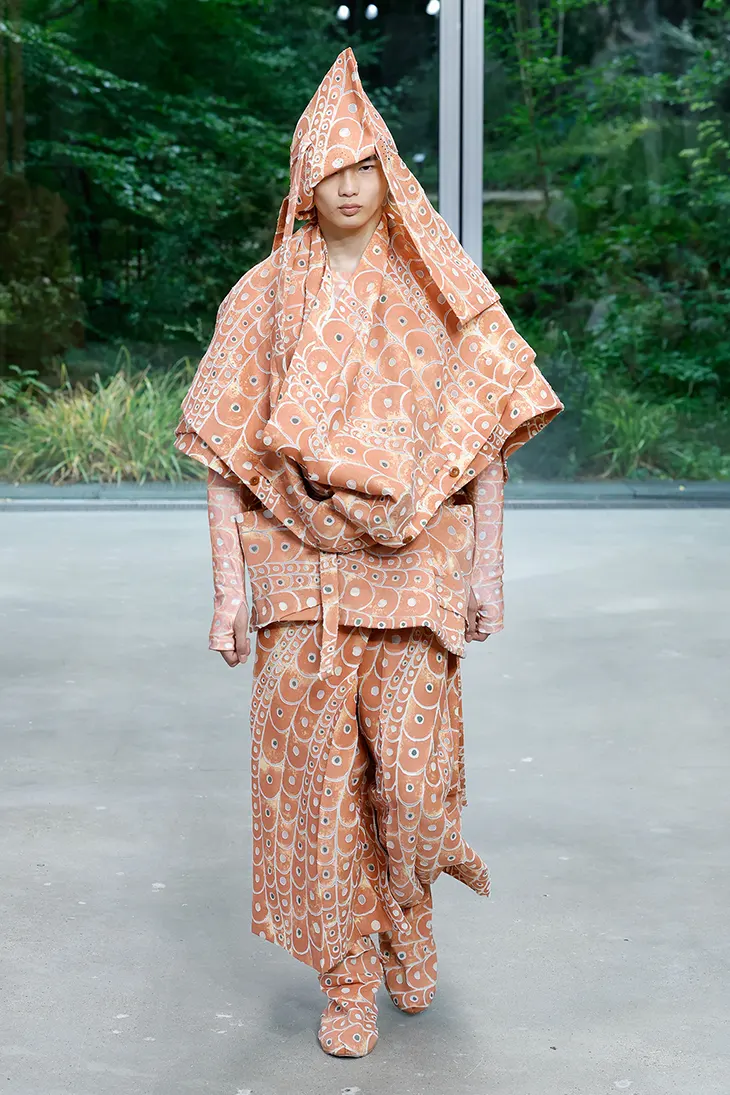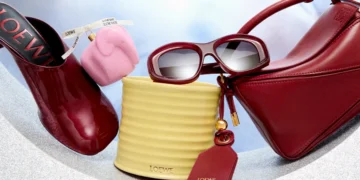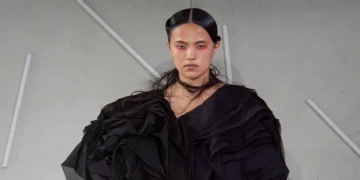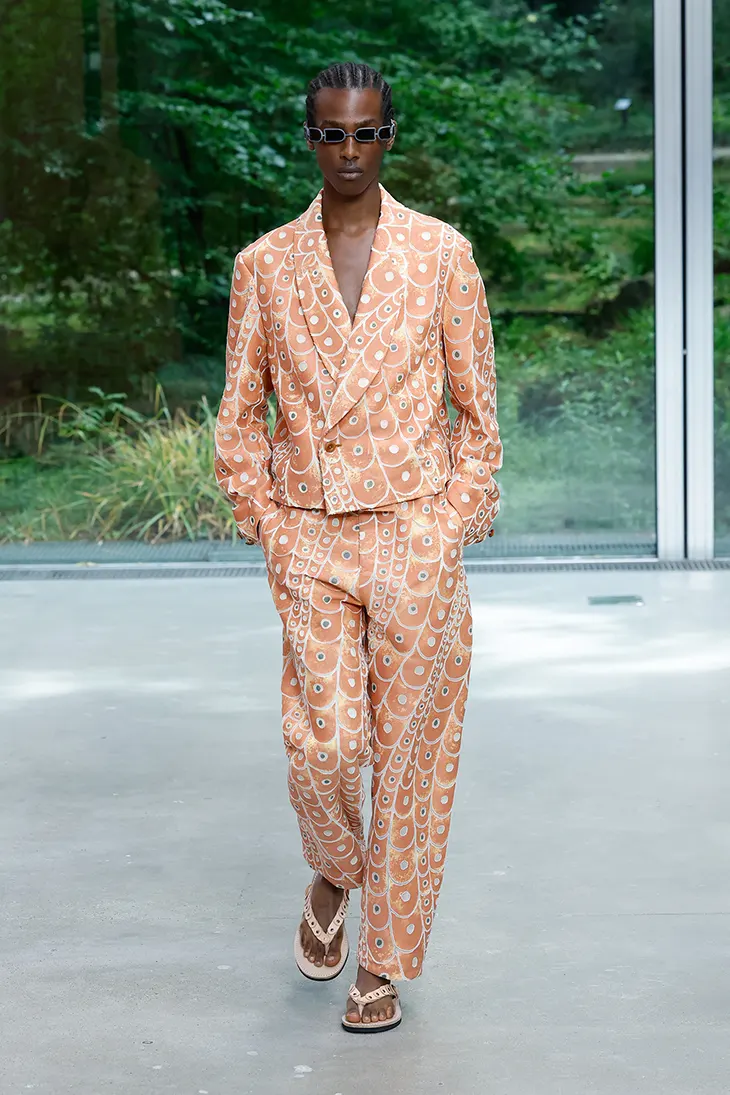
IM MEN presented its Spring Summer 2026 collection, titled DANCING TEXTURE, on June 26, 2025, at Fondation Cartier pour l’art contemporain in Paris. The location, designed by Jean Nouvel, offered a space for the brand to debut a project rooted in tactile experimentation and movement. The collection explores the connection between Shoji Kamoda’s ceramic works and clothing, translating his surfaces and forms into textiles and garments.
Shoji Kamoda, active from the 1950s until his death in 1983, remains one of the key figures in contemporary Japanese ceramics. IM MEN’s design team engaged in a dialogue with his creations, searching for a way to wear the spirit of his work. Kamoda’s surfaces, rugged, rhythmic, deliberate, became the starting point for a material study. The designers responded with a collection that approaches textiles as living textures, drawn from Kamoda’s vocabulary of depth, contrast, and shape.

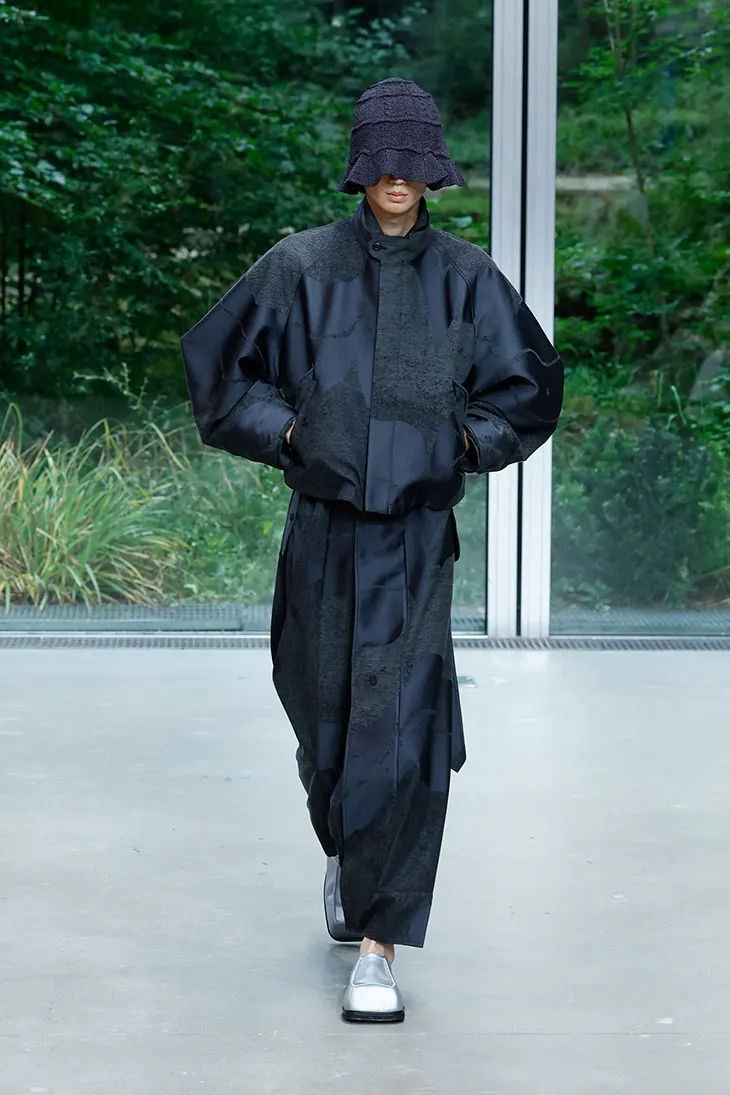
The UROKOMON series borrows its language from Kamoda’s animal-scale motifs. The bonding opal process used to develop the textile starts with a printed base, followed by a cotton overlay, another printed pattern, and selective treatment that dissolves portions of the top layer. After washing, the original pattern emerges through a layered surface, referencing the dimensionality of Kamoda’s ceramics.
GINTO FLAT takes a square silver-glazed bowl as its reference. Here, garments adopt the shape of the bowl when laid flat. Designers used silver foil to mimic the object’s sheen, directly applying it to the fabric rather than layering it. The approach allows subtle shifts in reflection across the garment, echoing the original’s imperfect luster. The resulting pieces maintain softness, resisting stiff lines and reinforcing the natural geometry of the source.
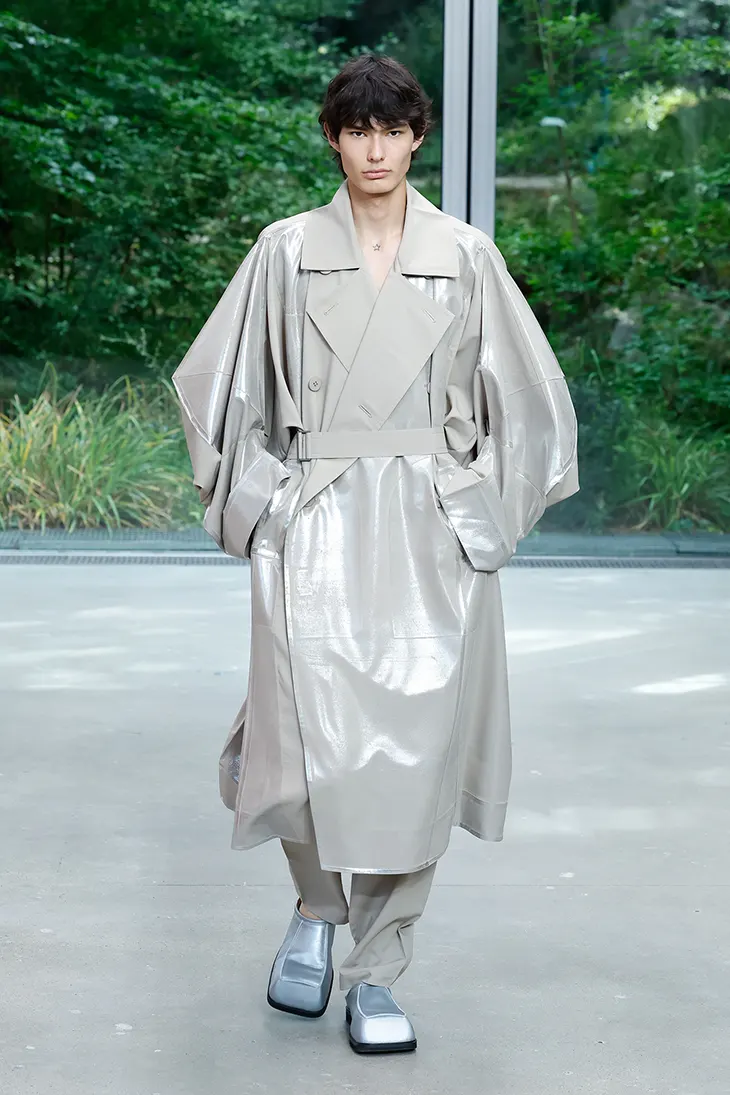
The RESILIENCE series uses lightweight polyester with a dry, canvas-like texture. A vivid color appears after garment dyeing, and the pieces incorporate functional tape detailing at key points such as pocket flaps and hem adjusters. Practical and designed for ease of movement, these clothes reflect a utility-forward design language. The FISHING NET NYLON series features recycled material sourced from discarded fishing nets in Japan. The fabric stands out with its green tone and delicate texture. Its construction prioritizes functionality, with a hood that can unzip to form a wide collar and a rain shield at the back.
In the KAIYU series, inspiration comes from the plant ash-glazed ceramics Kamoda developed. These pieces carry soft celadon tones with contrasting earthy textures. To translate that, designers printed directly onto the garments in their flattened state, building each half with layered screens and pigments to reflect the visual tension of glaze and clay. Glossy binders and powdered pigments add shine and matte finishes in key areas.
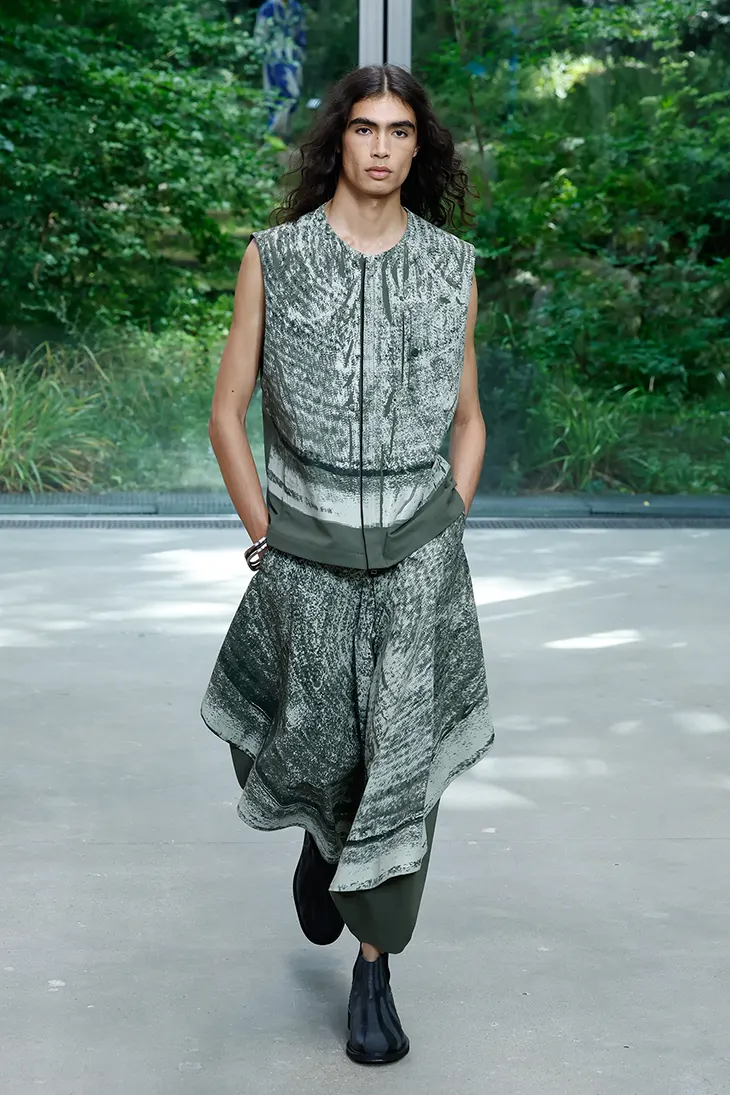
The ENGRAVE series draws from Kamoda’s “Waved Patterns,” where carved lines appear fluid at a glance but reveal studied intention upon closer inspection. IM MEN interpreted these patterns through jacquard weaving, using stretch yarn to create heat-shrunk fabrics that expand into sculptural forms. The pieces: a coat, pants with suspenders, and a blouson open and close into three-dimensional garments.
For EARTH, the starting point was a vermilion ceramic jar with exposed clay that reflects light through its irregular surface. IM MEN recreated the jar’s effect through a woven textile using five vermilion yarns, some wrapped with metallic thread. The reverse of the fabric appears gray, made possible by a specific warp technique. Wave-like cuts shape the silhouette, while zippers along the sleeves and body provide both structure and function.
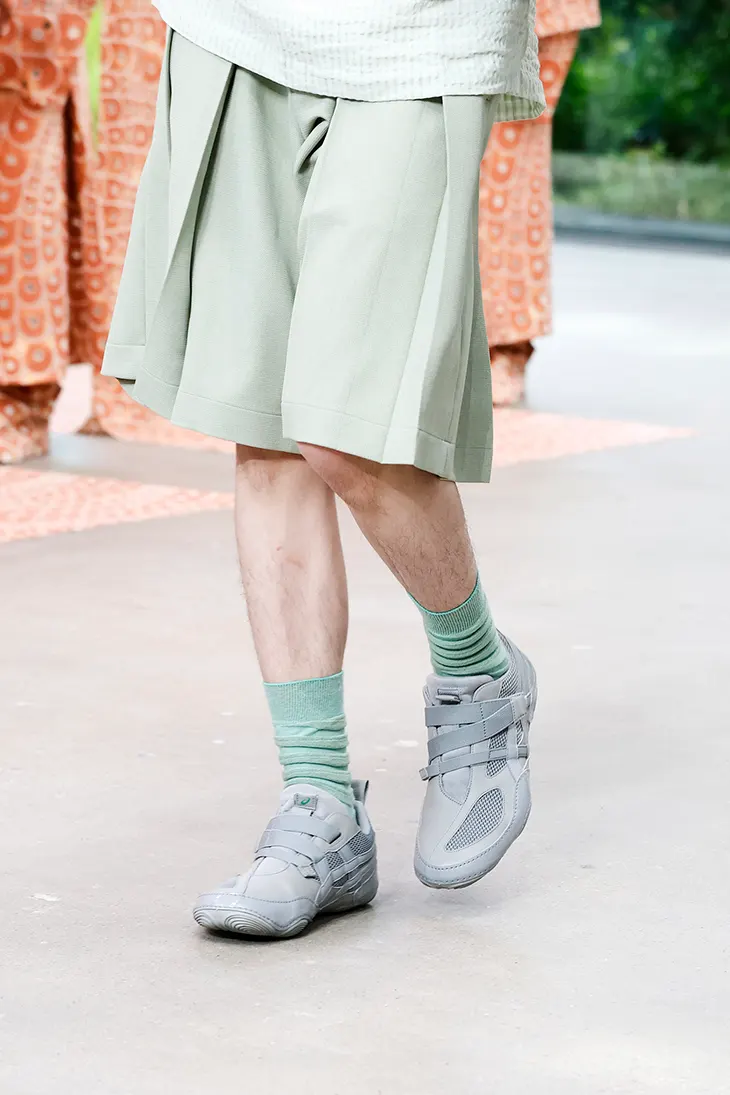
The show also introduced a new footwear project: ISSEY MIYAKE FOOT HYPER TAPING. Developed by MIYAKE DESIGN STUDIO (MDS) and ASICS SportStyle, the project reinterprets ASICS’ signature side stripes as functional taping that wraps the foot. This design takes cues from both ASICS’ engineering and MDS’s continued investigation into the body-garment relationship.
